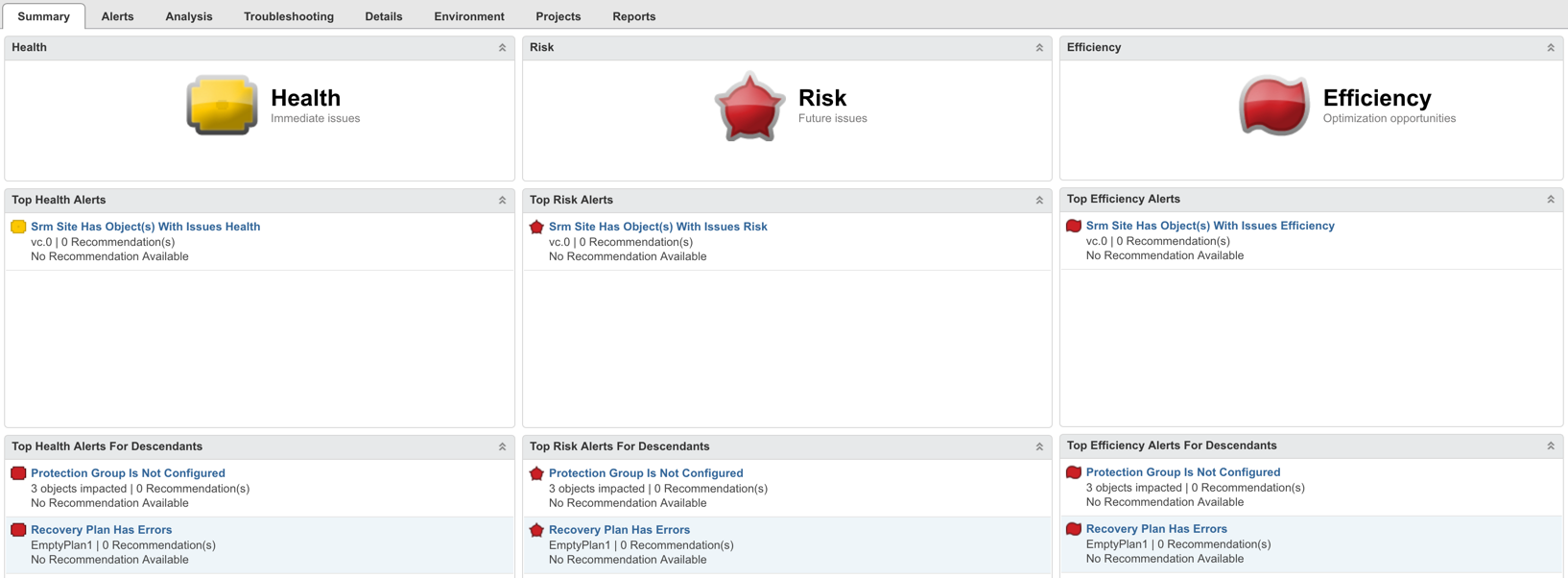VMware Site Recovery Manager 6.5 is an exciting release for VMware. We’ve added a number of cool features that make it easier to use and monitor SRM. We’ve also done a number of things to allow SRM to interoperate more and better with other VMware products. All of these improvements enhance what is already the premier virtualization BC/DR solution and provide additional value, time savings, security and risk reduction to customers.

vSphere 6.5 Compatibility
First off, SRM 6.5 is compatible with vSphere 6.5 including:
- Full integration with the new vCenter HA feature. SRM will continue working normally if vCenter HA fails over
- Full support for Windows vCenter to VCSA migration. If a customer uses the migration tool to upgrade and migrate their environment from vCenter 6.0 on Windows to vCenter 6.5 on the VCSA, from an SRM standpoint this is just seen as an upgrade and is fully compatible with a standard SRM upgrade
- SRM supports protecting VMs that are using VM encryption when using Storage Policy-Based Protection Groups (SPPGs)
- There is now support for Two-factor authentication such as RSA SecurID with SRM 6.5
Integration with the new vSphere Guest Operations API. This means that changes to VM IP addresses and scripts running on VMs will now be even more secure
vSAN 6.5 Compatibility
SRM 6.5 is fully supported and compatible with vSAN 6.5, as well as all previous vSAN versions, using vSphere Replication. SRM and vSAN make a great pair for a number of different use cases. They have and continue to work well together to provide low cost, easy to use vSphere integrated storage and disaster recovery.
SRM and VVOLs interoperability
In addition to all the new cool features that are part of Virtual Volumes (VVOLs) 2.0, SRM 6.5 now supports protection of VMs located on VVOLs using vSphere Replication. If you are using storage other than vSAN you owe it to yourself to take a look at VVOLs and see what you can get out of using them.
API and vRO plug-in enhancements – Scripted/Unattended install and upgrade
There have been a number of enhancements to the programmatic interaction with SRM 6.5. These take a few forms, primarily: exposure of a number of new options in the SRM API and significant enhancements to the vRealize Orchestrator (vRO) plug-in for SRM to take advantage of these. The new functions available through the API and vRO plug-in are listed below. Follow these links for details on the existing API and vRO plug-in.
- Add a Test Network Mapping
- Get Test Network Mappings
- Remove a Test Network Mapping
- Remove Folder Mapping
- Remove Network Mapping
- Remove Resource Mapping
- Remove Protection Group
- Remove Replicated VM From VR Group
- Unprotect Virtual Machines
- Add Test Network Mapping to Recovery Plan
- Create Recovery Plan
- Delete Recovery Plan
- Initiate Planned Migration Recovery Plan
- Remove Protection Group From Recovery Plan
- Remove Test Network Mapping From Recovery Plan
- Discover Replicated Devices
These functions along with the functions previously exposed provide programmatic access to almost the full range of SRM functionality. This makes it that much easier to manage and maintain SRM programmatically, saving time and improving accuracy and efficiency. Additionally, SRM 6.5 now fully supports unattended/silent installation and upgrades. This makes the deployment of SRM much faster and easier, saving you time and money.
vSphere Replication RPO
Another exciting new enhancement for SRM is actually part of a related solution, vSphere Replication. vSphere Replication now supports VM RPOs of as low as a 5 min on most VMware compatible storage. Look for the specific details in the release notes and documentation. This takes the RPO available with vSphere Replication to the point where it covers most use cases. And remember that vSphere Replication is included in vSphere Essentials Plus licensing and above.
vROps SRM Management Pack
Last but definitely not least, SRM 6.5 marks the first time that vROps has a management pack for monitoring SRM. This will allow for monitoring of the SRM server, Protection Group and Recovery Plan status from within vROps. This makes it easier to monitor, manage and troubleshoot SRM.
I hope you enjoy all these new features and capabilities, put them to good use and tell us about it.





